As we already found out there are no very old Record bench planes – production started in 1931 – and there are lots of them about, so ebay descriptions of “antique” Record bench planes are something of a misnomer. While the older models might reasonably be referred to as vintage, in the sense of something from the past of high quality, manufacturing standards declined over time and so it is useful to be able to spot the older versions.
Several aspects of the plane’s manufacture varied during the many years the planes were made, including the wood used for the handles; the metal finish and the design of the lateral adjusting lever; the adjusting nut; the cutting iron; and the frog.
All the variations in the manufacture of the parts are compatible so there is nothing to stop people piecing together a plane from a combination of parts made at different times and this makes 100% confident dating impossible. However, since these planes are commonplace and command relatively little money second-hand there is not much incentive for modern sellers to do this and it is unlikely it happens often (cutters excepted, of course, since they are consumables that are expected to be replaced during the life of the plane).
Rosewood handle & knob
The earliest planes had a rosewood handle & knob and the newer ones used beech, presumably this was a measure that saved costs and difficulties importing the rosewood from Asia. Rosewood is now a protected wood species and, if you can find any, very expensive.
Only one of the Record bench planes I own has rosewood handles and it is quite easy to see the difference if you look closely at the end grain – the rosewood has very noticeable pores, and in the case of East Indian Rosewood, which is apparently what was typically used in UK tool manufacturing, they are particularly dense:
The wood is from a rather attractive tree that is native to India and Nepal:
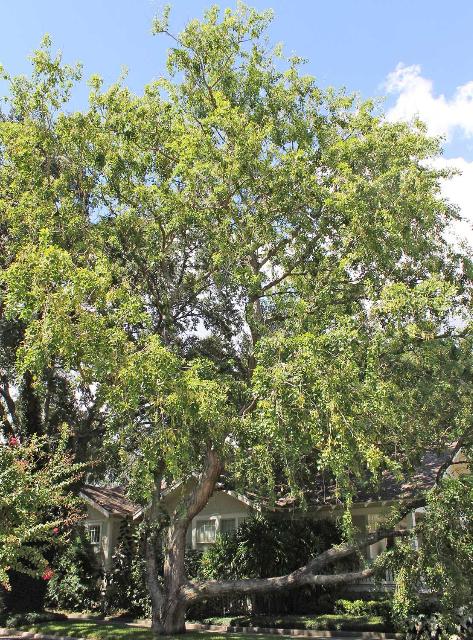
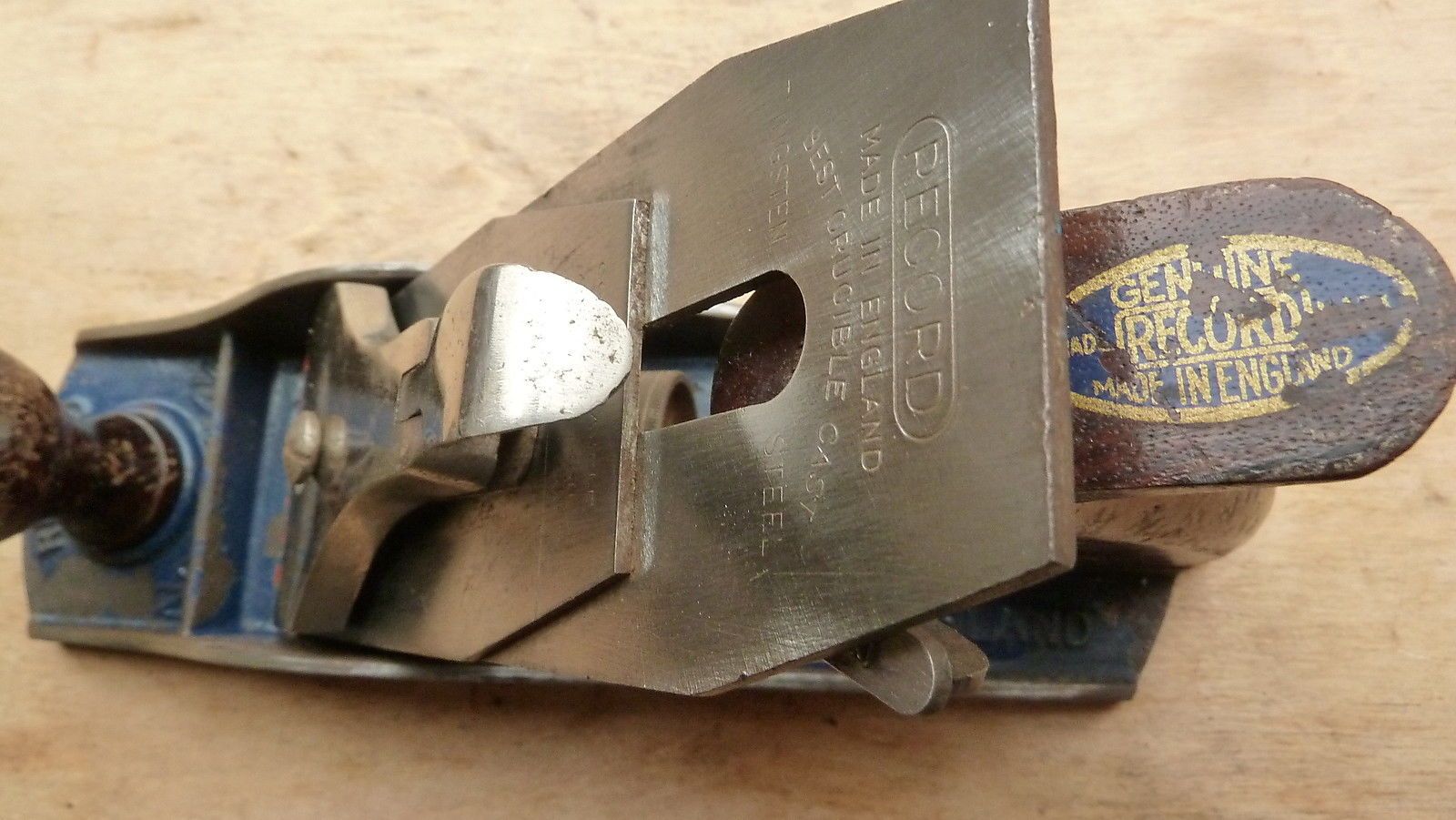
Rosewood tree (left). If you look closely at the picture on the right and you will see the pores in this rosewood handle.
The picture above (right) shows the distinctive pores on the top of the handle:
David Lynch's study of these planes says that in practice rosewood was only used until the second world war[1]. However, Record continued to describe the handles as rosewood until the 1950s, here is an example from the 1949 catalogue:

Frogs and lateral adjustment levers
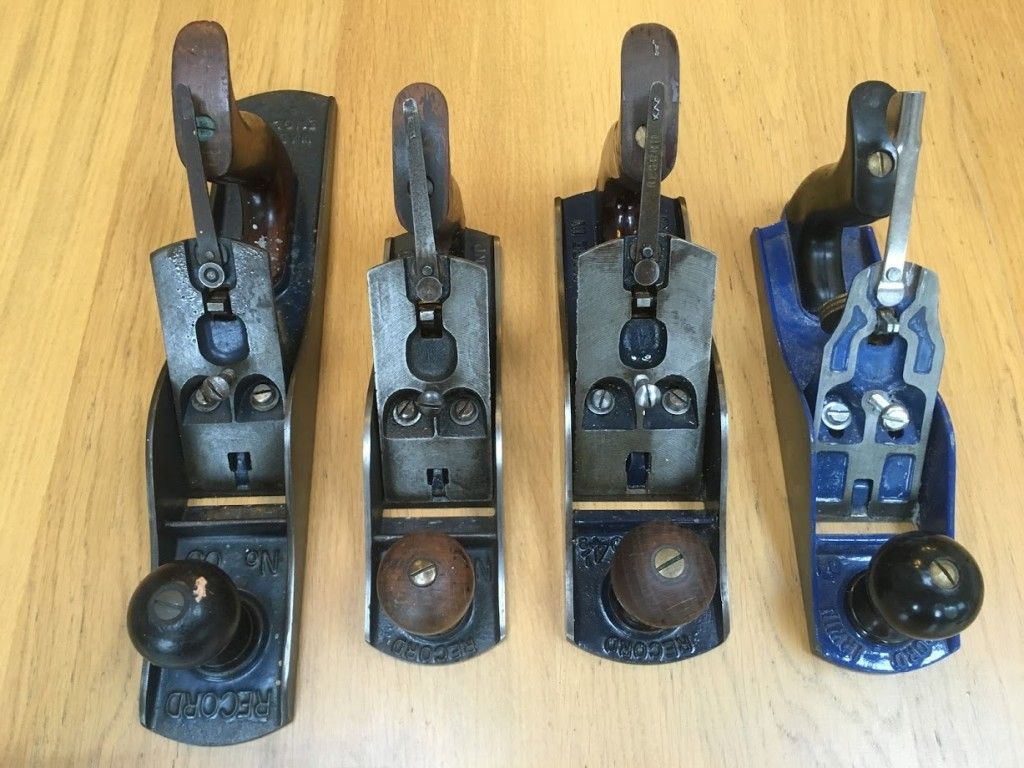
Before 1957 the frogs had straight sides and a flat machined face and after 1957 the surfaced is recessed and the sides have an ogee shape (see the plane on the far right, above, for an example) . Mr Lynch is generous in his assessment of the new design pointing out that it creates less friction when using the lateral lever to adjust the position of the cutting iron, but I have to say it is not easy to tell the difference in practice. The more cynical amongst us may note it requires less iron to make and the final surface needs less grinding.
The plane on the left has a revolving disc at the base of the lateral lever arm – these were used until 1939. The planes made during WWII had War Finish stamped on the lever arm (not shown), and after the war the arm changed again – this time a solid disc is used at the base (see 2nd from the left) and then once more between about 1952 and 1957 when “RECORD” was stamped on the arm (see 3rd from the left).
Adjustment nuts
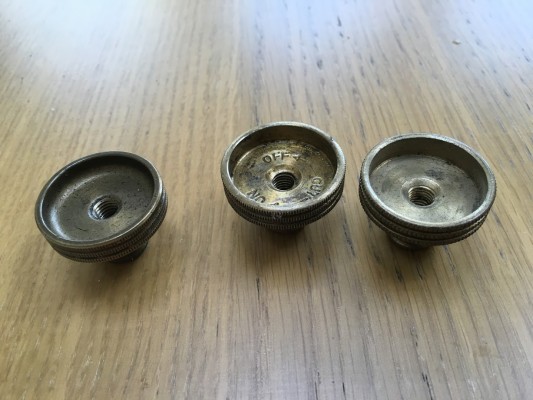
The nut on the left is rounded on the inside edge (to 1954) the middle nut has CUT – ON – OFF and a helpful arrow showing which way to turn the nut inscribed on the inside (’54-’64) and the one on the right is from a modern plane (note the square inside edge).
Lever caps and cutting irons
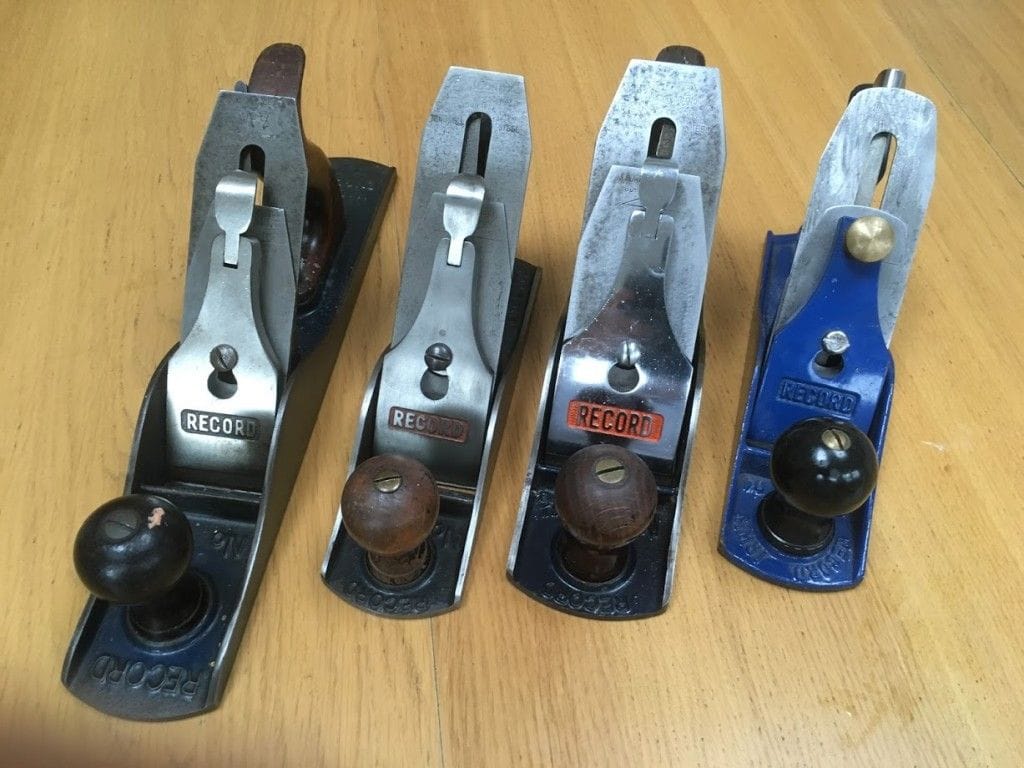
The original lever caps were nickel plated until 1939 (see above, left)- the use of nickel was restricted by the government during the war due to its importance in producing stainless steel, hence the “war finish” stamp mentioned above - then a lacquered finish (2nd left) was used and chrome from 1956 (third from the left). The modern plane lever cap is painted.
The cutting irons had a square top until the 1950s, and after which the round profile on the right was used (note the #5 on the left does not have its original blade).
If you are interested in the dating of record planes or in finding other information about the manufacturer please do take a look at the recordhandplanes.com site – there is plenty of additional detail there.
Quality
Based on Mr Lynch’s guide, the planes (in the picture above, from left to right) date from 1931-39, 1945-52, and 1954-1957 respectively. Apart from the use of rosewood for the oldest, there is no obvious difference in quality between the three planes.
However, things have taken a turn for the worse by the time the modern one on the right was made (~10 years ago). Here are the main differences:
- the top edges of the sides are no longer ground smooth and are painted over
- the handle and knob are made from plastic
- the lateral lever adjuster is made of one piece of steel pressed into shape to form the finger hold (rather than two pieces welded together)
- The frog is a lighter construction
- The screw adjuster to allow the frog to be moved back and forward to widen or narrow the mouth has gone
- the frog yoke adjuster (not shown in the pics above) is now a two pieced pressed steel affair rather than the original cast iron version.
- Painted rather than chrome lever cap
- Brass furled nut on the lever cap instead of the original thumb-push[1] improvement. I still would be willing to bet it was cheaper to make, though!
It is hard to avoid the conclusion that the main motivation behind these changes was to reduce cost, and it is often said that the quality of the iron castings and the steel used for the blades declined at this time also. Although it is not easy to substantiate the last point, it is hard to believe that the company would have missed an opportunity to further reduce costs by doing this if it was possible.
Why did this happen? It seems the most likely explanation is the development of the DIY market, practically unheard of before the 1950s, but a vast opportunity for manufacturers if they could produce to the lowest price point for a large market that, by and large, cared less about quality than those people who needed their tools in order to make a living.
the lesson is that you can still get a very good Record bench plane, but you’d be as well looking for one that was made before the ’60s. Having said that, as we will see in subsequent posts, even the most unpromising looking planes can be got to work with a bit of elbow grease, so don’t despair if you can only get a newer one.
References
| 1⏎ | David Lynch was an avid collector of Record tools and historian based in Australia. Sadly he died several years ago. A good samaritan has kept his website running |
| 2⏎ | in the interest of balance, I should note that the new design is arguably an improvement. I still would be willing to bet it was cheaper to make, though! |
